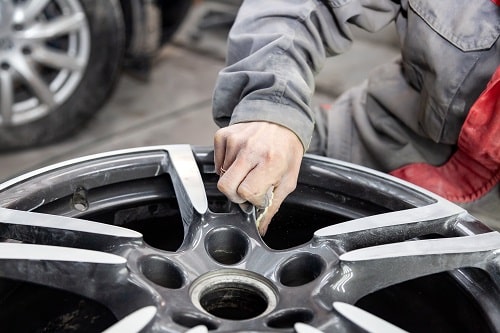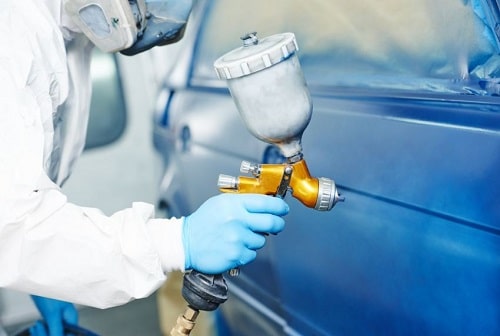 The origins of car paint
The origins of car paint
We are going to devote the first chapter of our file on the history of car paint, motorcycle paint and bike paint to the evolutions of the first automotive paints. We will see that technical advances have improved many aspects of car paints : drying time, durability, gloss, as well as their strength and resistance to sunlight and oil.
The first automobile paints and their evolution
This article will be an opportunity to delve into different periods of the 20th century :
The Roaring Twenties : discovery of modern paints
The 1930s : alkyd lacquers and the first color mixing machines.
The 1950s : acrylic paints
This retrospective will allow you to better understand how automotive paints appeared and how they evolved.
The Roaring Twenties
The 1920s were marked by the discovery of modern paints and the first paint guns.
1920 : During this period, it was the manufacturer Ford Motor, which was already manufacturing in series on its assembly lines automobile, which distinguished itself by its innovation by releasing the first nitrocellulose paints. The drying times of these first chemical paints were significantly shortened since they were reduced from 3 weeks to 6 hours !
1923 : It was a great year for the evolution of automobile paint, with Dupont significantly improved the automotive paint system by further developing nitrocellulose paints, primers and lacquers. Great year also with the use by General Motor of the very first paint guns, which allow a better and faster application.
The 1930s
1930 : the time to repaint a car has been greatly reduced. Nevertheless, it was necessary to manually rub and polish the paints for a long time to make them shiny. On the other hand, these first paints were quite fragile and very sensitive to oil. Regularly damaged, they did not provide sufficient durability.
New progress began in the 1930s, when car manufacturers began to use baked alkyd lacquers : These allowed increased robustness thanks to their 2 mm thickness, better resistance to essence, a better gloss of the paint. They also reduced the number of coats and the drying time.
As nothing is ever so easy, oven-baked alkyd lacquers showed a weakness : their fragility in the face of the sun : the colors faded and the gloss became dull quickly, sometimes within a few months.
1935 : appearance of the first color mixing machines applied to the automotive industry.
 The 1950s : acrylics
The 1950s : acrylics
During these years, we always find the pioneering companies General Motors, Ford, and Dupont, in the race for new improvements in this already competitive environment.
It is the appearance of the first acrylics, big sister of our modern paintings, which necessarily required cooking. During these years, progress was sought as much in resistance (to the sun, to bad weather, to gasoline) as in shine. And the first acrylics showed a weak point in terms of gloss.
It was only at the beginning of the 1960s, after much failure, testing and research, that acrylic car lacquers finally showed their superiority with great durability (relative to the era) and a wonderful palette of bright and even metallic colors !
The evolution of car paint, motorcycle paint and bike paint
The future of car paint, motorcycle paint and bike paint
The history of the Stardustcolors company



















































































